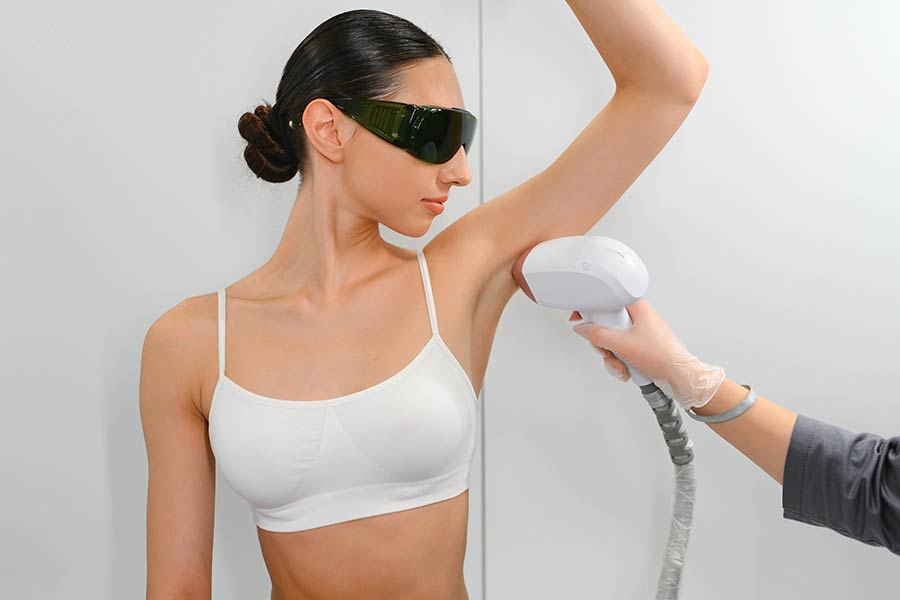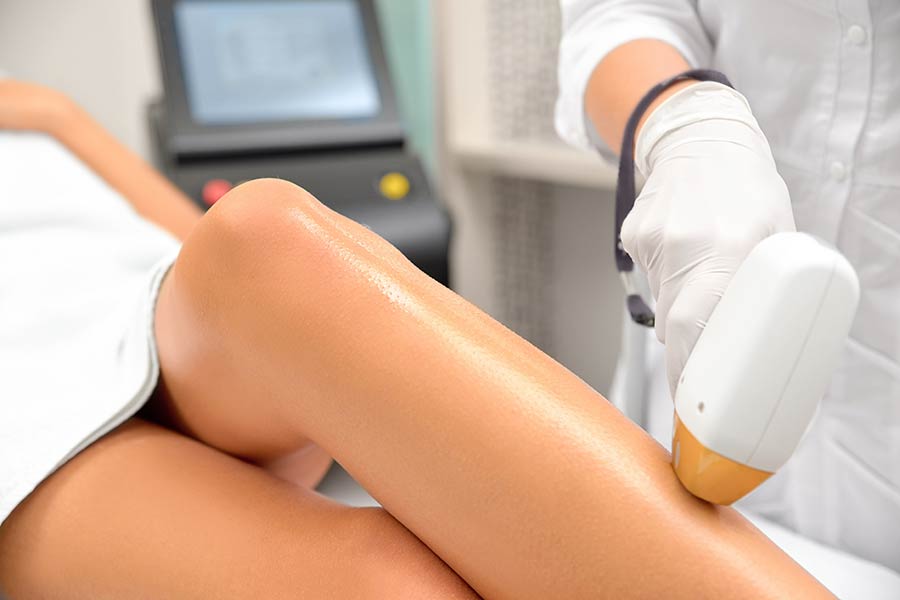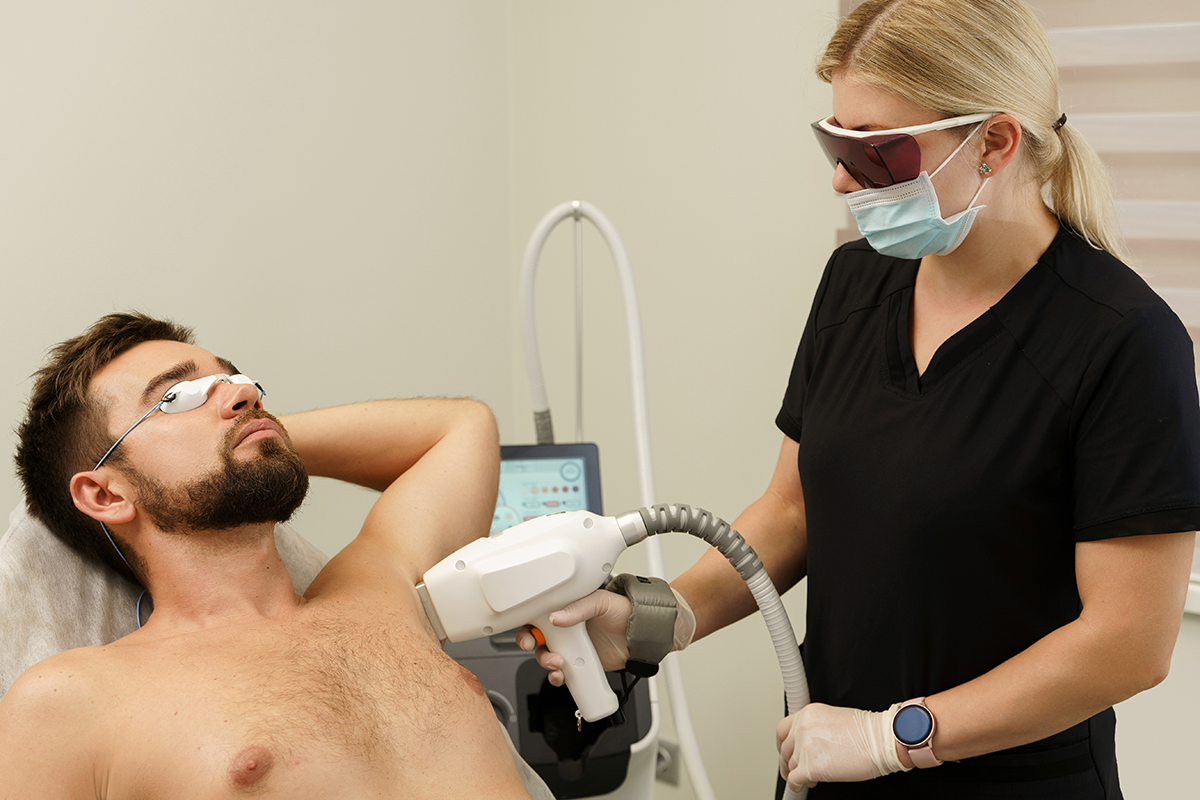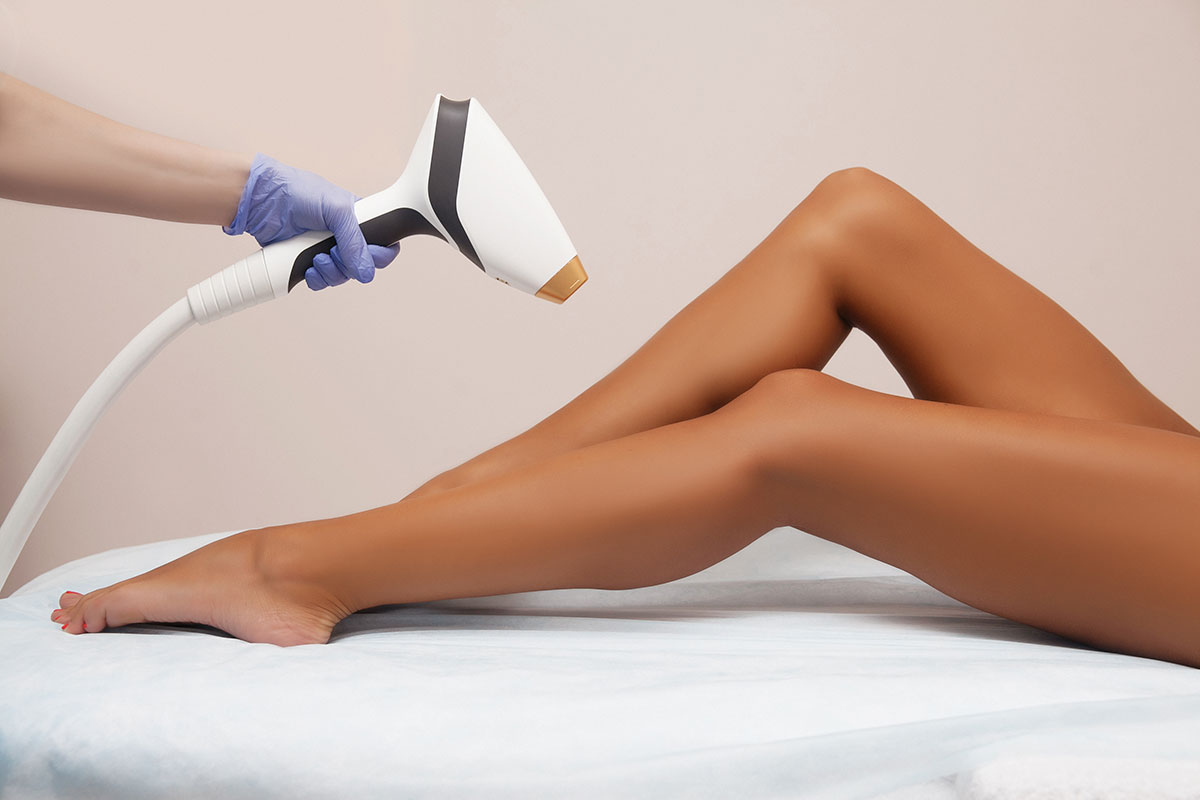Gone are the days of endless shaving, painful waxing, and those pesky razor bumps. Welcome to the era of laser hair removal body treatments, where smooth skin isn't just a dream—it's your new reality. This method stands out not just for its effectiveness but for how it revolutionizes our approach to personal grooming. Imagine ditching your razors and canceling your waxing appointments for good. With laser hair removal, that's not just possible; it's a game changer. It's time to embrace the convenience and long-lasting results that come with this modern beauty solution.
Key Takeaways
- Start with Research: Learn about laser hair removal before deciding. It's more than just zapping unwanted hair; it involves understanding the process, preparing your skin, and knowing the aftercare.
- Prep is Key: Shave the area to be treated before your appointment, as recommended in the "Preparing for Treatment" section. Avoid sun exposure and certain skincare products to ensure the best results.
- Expect Some Discomfort: While not painless, the discomfort during the procedure is manageable. Many compare it to a rubber band snapping against the skin.
- Patience Pays Off: Immediate results are not typical. As outlined in "Aftercare and Recovery," it takes multiple sessions to see significant hair reduction, with the full effect visible months after starting treatment.
- Long-Term Benefits Are Worth It: Despite the cost and time commitment, the "Long-Term Benefits" section highlights how laser hair removal offers a permanent reduction in hair growth, saving time and money in the long run.
- Choose Wisely: The "Choosing the Right Provider" section emphasizes the importance of selecting a qualified and experienced professional for safe and effective treatment. Don't let cost be the sole deciding factor.
Understanding Laser Hair Removal
How It Works
Laser hair removal targets hair follicles with light energy. This process heats the follicles to stop new hairs from growing. Melanin in the hair absorbs the laser's energy, which is why it works best on darker hair.
For complete results, you need multiple sessions. This is because hair grows in cycles, and not all hairs are in the same phase at once. So, several treatments ensure that all follicles are targeted over time.
Types of Lasers
There are several lasers used for hair removal. Each works a bit differently.
- Diode lasers work well for most skin and hair types.
- Alexandrite lasers offer fast treatment for light skin.
- Nd:YAG lasers can safely treat dark skin without damaging it.
- Ruby lasers were among the first used but are less common now due to advancements in technology.
Each type has been designed with specific skin and hair colors in mind. Newer models also focus on reducing pain and increasing efficiency during treatment.
Treatment Areas
Laser hair removal can be done on many parts of the body. Common areas include legs, underarms, bikini line, and face. It's versatile enough to handle both large areas like the back and small spots like the upper lip.
Men and women might choose different areas for treatment based on personal needs or preferences. For example, men often opt for back or chest hair removal, while women might focus on legs or facial hair.
Expected Results
It's important to have realistic expectations. Laser treatments can greatly reduce hair growth but might not remove all hair permanently. Most people see significant results after three to seven sessions.
The full effect usually becomes visible a few weeks after your final session as all treated hairs fall out. Some might need maintenance treatments once a year or so to keep new growth at bay.
Preparing for Treatment
Initial Consultation
Before starting laser hair removal, the first step is an initial consultation. This meeting is crucial. It's when you talk about your medical history and skin type. These details help ensure the treatment is safe for you.
You should bring a list of any medications you're taking. Some medicines can affect how your skin reacts to the laser.
The specialist will also look at the area you want treated. They'll check the hair and skin to plan the best approach. This assessment guides them in customizing your treatment.
Pre-Treatment Care
Getting ready for laser hair removal involves a few key steps. First, it's important to avoid sun exposure. Sunburned or tanned skin can complicate the procedure.
Don't wax or pluck hairs in the area before your appointment. These methods remove the hair from the root, which is what the laser targets.
However, you should shave the area 24 hours before treatment. Shaving leaves enough of the hair shaft for the laser to find its target without damaging surrounding skin.
What to Avoid
After your laser session, careful aftercare is vital. Keep away from sun exposure and tanning beds to protect your freshly treated skin.
Certain skincare products might irritate your skin now more than ever. Steer clear of products with harsh chemicals or fragrances for a while.
Also, resist picking or scratching at the treated area. It might feel itchy as it heals, but disturbing it can lead to scarring or infection.
By following these guidelines, you prepare your skin and body for a successful laser hair removal experience. Understanding these steps helps bridge knowledge from merely understanding how laser hair removal works to effectively preparing for it. These preparations ensure that both you and your skin are ready for what’s ahead, paving the way for smoother, more effective treatments.
During the Procedure
What to Expect
When you settle into the chair for laser hair removal, expect a unique sensation. Many describe it as similar to a rubber band snapping against the skin. It's quick but can be surprising if you're not ready for it.
Each session's length varies widely. It depends on how big or small the area being treated is. For instance, removing hair from your back takes longer than from your upper lip.
After the laser does its job, your skin might react. This means redness and swelling are common. They're temporary signs that the treatment is working.
Pain Management
Laser hair removal isn't without discomfort, but there are ways to ease it. Topical numbing creams can be applied before the session. They help make the snapping sensation more bearable.
e clinics use cooling devices or blow cold air on the skin during treatment. This helps soothe any discomfort almost immediately.
Always talk with your practitioner if you're feeling uneasy. They can adjust settings or give you breaks to ensure your comfort is a priority.
Session Duration
How long does each session take? It varies. Underarms might need about 15 minutes, while legs could take up to an hour.
The time needed depends on two main things: hair density and area size. More hair or a larger area means a longer session.
Sessions are spaced out, usually about four to six weeks apart. This allows your skin to recover and hair to enter the right growth phase for effective removal.
Aftercare and Recovery
Skin Care Post-Session
After your laser hair removal session, it's crucial to pamper the treated skin. Choose gentle skincare products that won't irritate the area. Look for items labeled "for sensitive skin" or those containing aloe vera.
You must also shield your skin from the sun. Apply a broad-spectrum sunscreen with at least SPF 30. This helps prevent hyperpigmentation and keeps the treated area safe.
It's wise to wait a bit before diving back into your regular skincare routines. Give it a few days until the skin feels normal again. Then, you can slowly reintroduce other products.
Managing Side Effects
It's common to experience some redness, swelling, or itching after treatment. These signs show your body is reacting as expected. To ease these symptoms, cool packs or over-the-counter hydrocortisone creams can be helpful.
However, if you notice anything out of the ordinary—like severe pain or signs of infection—it's important to contact a professional immediately. They can offer guidance and ensure everything is healing correctly.
Remember, most side effects are temporary. They usually disappear within a few days without needing special treatment.
Activity Restrictions
To ensure a smooth recovery, there are some activities you should avoid for a short period. Strenuous exercise can wait for 24-48 hours post-session. Working out too soon might cause extra irritation or sweating that disrupts the healing process.
Also, stay away from hot environments such as saunas or steam rooms. High temperatures can increase discomfort and swelling in the treated areas.
Lastly, opt for loose clothing that doesn't rub against your skin. Tight fabrics might cause friction that leads to irritation on sensitive spots.
Long-Term Benefits
Smoother Skin
After transitioning from regular shaving or waxing to laser hair removal, many notice a significant improvement in their skin's texture. This method leads to less hair, which naturally results in smoother skin. Without the constant irritation from razors and wax, your skin condition improves remarkably.
Another benefit comes in the form of fewer ingrown hairs. Unlike shaving that often causes this uncomfortable issue, laser treatment helps reduce them significantly. This means not only smoother but also healthier-looking skin.
Reduced Hair Growth
One of the most appreciated long-term benefits of laser hair removal is the gradual decrease in hair density and thickness. Over time, some hairs may even become finer and lighter, making them less noticeable. However, it's important to understand that results can vary based on individual hair growth cycles.
This variance means while some enjoy near-complete hair disappearance, others might see reduced growth rates. Either outcome leads to less time and money spent on traditional hair removal methods.
Increased Confidence
Many who undergo laser hair removal report a boost in self-esteem and body image. Reading through testimonials reveals stories of individuals feeling more confident in their appearance. This newfound confidence often stems from not worrying about unwanted hair or planning around their removal.
The convenience factor plays a significant role here as well. Imagine no longer needing to shave daily or book regular waxing appointments. This freedom allows for spontaneity in life choices, whether it's wearing your favorite outfit on short notice or deciding on a swim.
Real-Life Transformations
Before-and-After Scenarios
Imagine seeing a dramatic difference in your skin. That's what happens with laser hair removal. In the beginning, you might see dense, coarse hair. After several sessions, it becomes thinner and less noticeable. Some people start noticing changes after just three sessions. For others, it takes up to eight.
People with dark hair and light skin often see the quickest results. But even those with darker skin tones have witnessed significant improvements over time. This is because modern lasers can now better target the hair without affecting the surrounding skin as much.
Testimonials
John, a 45-year-old man, struggled with back hair for years. He felt self-conscious at the beach or pool. After six sessions of laser hair removal, he now enjoys summers without worry or embarrassment.
Maria, 32, had sensitive skin and was tired of razor burns on her legs. Laser treatments not only reduced her hair growth but also improved her skin's texture. She hasn't picked up a razor in over a year.
These stories show how life-changing this treatment can be across different ages and genders. Whether it's facial hair for women or chest hair for men, the satisfaction spans wide.
Case Studies
Consider Sarah, who had polycystic ovary syndrome (PCOS). Excessive facial hair made her anxious and depressed. Traditional methods were painful and temporary. Laser therapy presented unique challenges due to her hormonal imbalance but was ultimately successful after more sessions than usual.
Then there's Alex, who has tattooed arms. He was concerned about how laser treatments would affect his ink. With careful planning and using specific laser types, technicians could avoid the tattoos while effectively removing arm hair.
Professionals highlight these cases to show that success depends on many factors: skin type, hair color, underlying health conditions, and even tattoos.
Potential Side Effects
Common Reactions
After a laser hair removal session, some immediate reactions are normal. These include redness, swelling, and sensitivity in the treated area. Most people find that these symptoms subside within a few hours to a few days. It's the body's natural response to the treatment process.
If these reactions last longer than expected or worsen, it's crucial to seek medical advice. A professional can determine if what you're experiencing is part of the normal healing process or if it indicates something more serious.
Rare Complications
While laser hair removal is generally safe, there are uncommon risks such as burns or scarring. These serious side effects are rare but possible. They underline the importance of choosing qualified practitioners for your treatments. Professionals with the right training and equipment know how to minimize these risks effectively.
Signs like lasting pain, changes in skin texture, or unusual marks should prompt immediate medical attention. These could indicate complications from the treatment requiring professional care.
Minimizing Risks
To ensure your laser hair removal experience is both effective and safe, selecting experienced and certified professionals is key. They not only provide quality service but also guide you through proper pre- and post-treatment care instructions. Following their advice closely can significantly reduce potential side effects.
For those with specific skin concerns, consulting with a dermatologist before undergoing laser hair removal is wise. They can offer personalized advice based on your skin type and condition, further minimizing any risks associated with the procedure.
Choosing the Right Provider
Qualifications to Look For
When selecting a laser hair removal provider, certifications and training are crucial. Make sure they have proper credentials. This shows they know how to use the equipment safely. It also means they understand skin types.
A provider should have specialized knowledge in laser technology. This ensures they choose the right settings for your skin. A clean, professional environment is a must too. It reflects their overall approach to care.
Consultation Questions
Before starting treatment, ask about the laser type used. Different lasers work better on different skin and hair types. Knowing why a certain laser is suitable for you is important.
Inquire about the number of treatments you'll need. This varies based on many factors, including hair thickness and area size.
Discuss potential side effects, especially if you have concerns from our previous section on them. Understanding how these are managed can ease worries.
Evaluating Experience
Look up reviews of the practitioner online. Before-and-after galleries give a good idea of their work quality.
Word-of-mouth recommendations are invaluable. They come from people who have experienced the service first-hand.
A good practitioner will be happy to answer your questions. Their willingness shows they care about your comfort and results.
Cost and Considerations
Pricing Models
Laser hair removal costs can vary widely. Clinics might charge per session or offer package deals. The size of the treatment area plays a big role in pricing. A small area like the upper lip costs less than larger areas like the back. Location matters too. Clinics in big cities often charge more.
It's smart to ask about extra fees. Some places have hidden charges for consultations or follow-up care. This way, you won't be surprised by your bill.
Insurance Coverage
Most insurance plans see laser hair removal as a cosmetic procedure. This means they usually don't cover it. However, it's worth checking with your insurance company. There might be exceptions.
Using a Health Savings Account (HSA) or Flexible Spending Account (FSA) could help pay for treatments. These accounts let you use pre-tax dollars for medical expenses, including some cosmetic procedures.
Payment Plans
Many clinics offer financing options to make payment easier. They understand that not everyone can pay upfront for laser hair removal. Third-party companies also provide healthcare financing plans. These can help spread out the cost over time.
Before choosing a plan, compare the terms and interest rates carefully. You want to find the best deal without adding too much stress to your budget.
Final Remarks
Laser hair removal is like hitting the refresh button on your skin, offering a smooth, carefree experience minus the constant battle with razors and wax. You've walked through the what, how, and aftercare, understanding both the sunshine and the rain of this journey. It's clear that while there are a few bumps along the road, like potential side effects and choosing the right provider, the destination—a life with less unwanted hair—seems pretty worth it. Plus, knowing the costs upfront means no surprises later on.
re you ready to take the leap? Remember, it's all about finding that perfect match in a provider and making sure you're prepped and primed for what's ahead. Dive in, embrace the process, and enjoy stepping out with confidence. It's your time to shine without the shadow of unwanted hair. Let's get you started on this transformative journey!
Frequently Asked Questions
How does laser hair removal work?
Laser hair removal uses concentrated light beams to target and destroy hair follicles, which prevents future hair growth. Think of it as using a precision-guided light missile to zap away unwanted hair.
Is preparing for laser hair removal complicated?
Not at all! Just avoid sun exposure, don't pluck or wax, and shave the area a day before your treatment. It's like prepping your skin for a smooth canvas.
What should I expect during the procedure?
You'll feel a snapping sensation, like a rubber band hitting your skin. The area being treated might also feel warm. But don't worry, it's quick, and many find it more comfortable than waxing.
How long does recovery take after laser hair removal?
There's minimal downtime. You might see some redness or swelling, similar to mild sunburn, but this usually subsides within a few hours to a couple of days. Basically, you can jump back into your routine pretty quickly.
What are the long-term benefits of laser hair removal?
Imagine not having to shave or wax ever again. We're talking smooth skin without the hassle or razor burns. Plus, no more ingrown hairs!
Can laser hair removal cause side effects?
Yes, like any cosmetic procedure, there can be side effects such as redness, irritation, or changes in pigmentation. But these are generally temporary and mild. Think of them as minor hiccups on the road to smooth skin.
How do I pick the right provider for laser hair removal?
Look for someone with expertise and good reviews—think of it as choosing a pilot for your flight to Hairlessville. Ensure they have the right qualifications and experience with your skin type.
Is laser hair removal expensive?
Costs vary based on body area size and session numbers needed but view it as an investment in ditching your razors and saving time in the long run.












